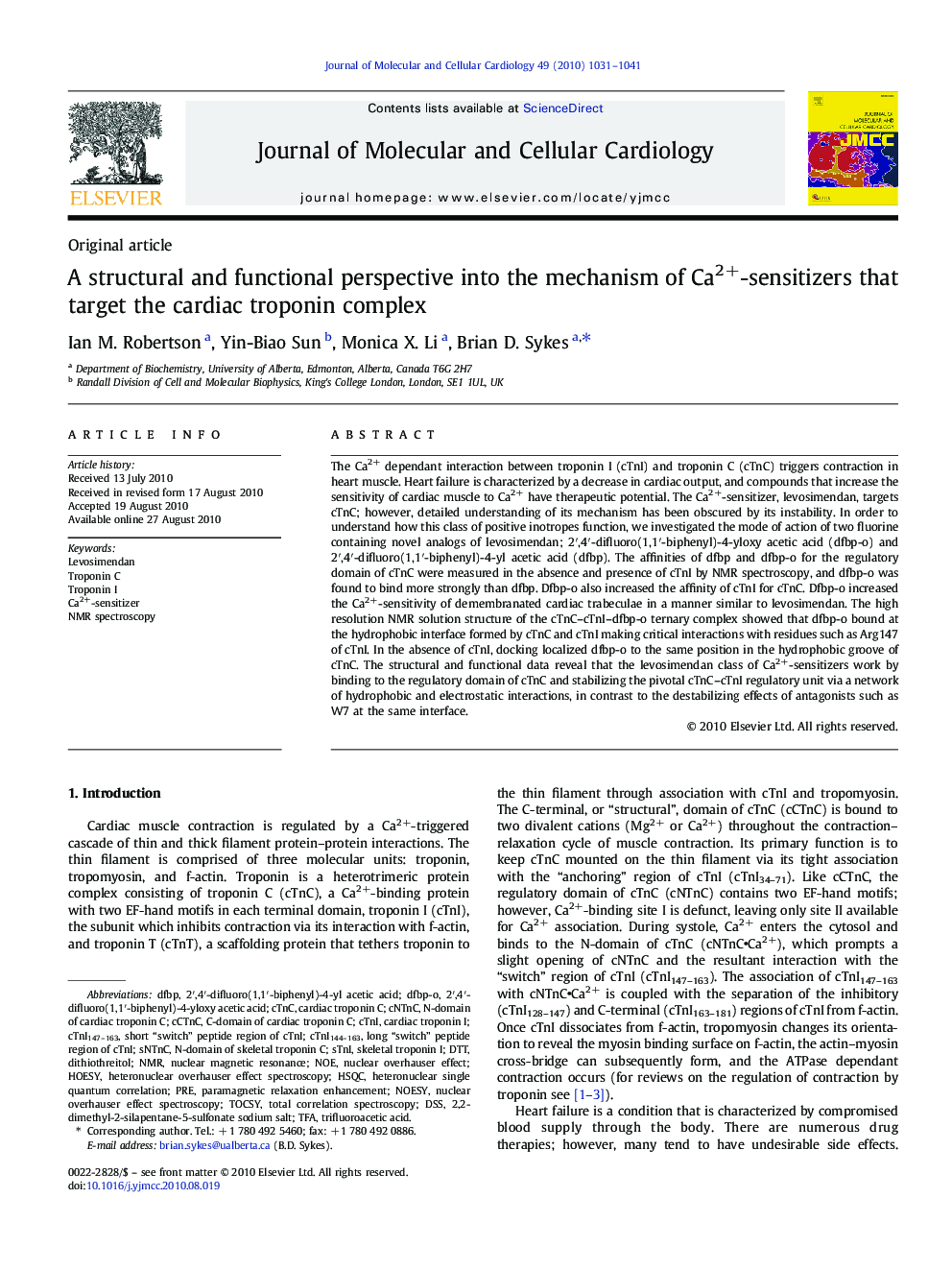| Article ID | Journal | Published Year | Pages | File Type |
|---|---|---|---|---|
| 2190912 | Journal of Molecular and Cellular Cardiology | 2010 | 11 Pages |
The Ca2+ dependant interaction between troponin I (cTnI) and troponin C (cTnC) triggers contraction in heart muscle. Heart failure is characterized by a decrease in cardiac output, and compounds that increase the sensitivity of cardiac muscle to Ca2+ have therapeutic potential. The Ca2+-sensitizer, levosimendan, targets cTnC; however, detailed understanding of its mechanism has been obscured by its instability. In order to understand how this class of positive inotropes function, we investigated the mode of action of two fluorine containing novel analogs of levosimendan; 2′,4′-difluoro(1,1′-biphenyl)-4-yloxy acetic acid (dfbp-o) and 2′,4′-difluoro(1,1′-biphenyl)-4-yl acetic acid (dfbp). The affinities of dfbp and dfbp-o for the regulatory domain of cTnC were measured in the absence and presence of cTnI by NMR spectroscopy, and dfbp-o was found to bind more strongly than dfbp. Dfbp-o also increased the affinity of cTnI for cTnC. Dfbp-o increased the Ca2+-sensitivity of demembranated cardiac trabeculae in a manner similar to levosimendan. The high resolution NMR solution structure of the cTnC–cTnI–dfbp-o ternary complex showed that dfbp-o bound at the hydrophobic interface formed by cTnC and cTnI making critical interactions with residues such as Arg147 of cTnI. In the absence of cTnI, docking localized dfbp-o to the same position in the hydrophobic groove of cTnC. The structural and functional data reveal that the levosimendan class of Ca2+-sensitizers work by binding to the regulatory domain of cTnC and stabilizing the pivotal cTnC–cTnI regulatory unit via a network of hydrophobic and electrostatic interactions, in contrast to the destabilizing effects of antagonists such as W7 at the same interface.
Research Highlights►dfbp-o increases the Ca2+-sensitivity of demembranated cardiac trabeculae. ►The affinity of cTnI for cTnC is enhanced by dfbp-o. ►dfbp-o targets the hydrophobic patch of cTnC and stabilizes its open state. ►Electrostatic attraction between cTnI and dfbp-o is crucial for dfbp-o's activity.
